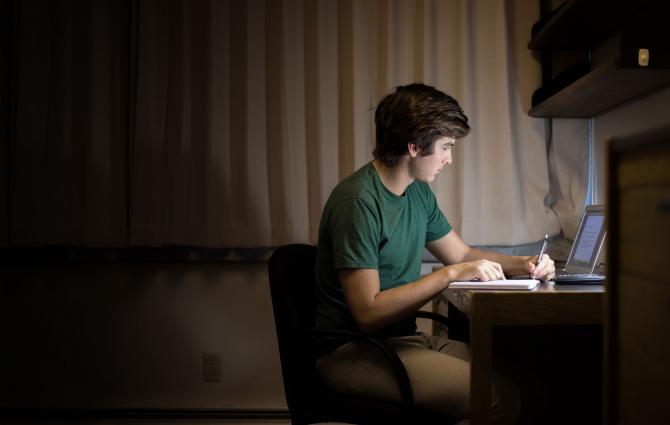Want to see the latest meme? Just two taps away. Wondering what your friend did this weekend? A few scrolls and you found it. Need to share something funny you saw? Snap, click, you’re done.
I still remember the first day I hopped on the bandwagon for Instagram and Snapchat. Prior to using those, my social media days consisted of posting “Like for a tbh” Facebook statuses, and sending wacky stickers to friends through MSN Live Chat.
Fast forward 10 years, and here we are—me, my friends, my family, everyone around me, buzzing away on modern social media daily. It’s no longer a novelty, it’s simply…normal.
But unlike the ‘perfect lives’ we see on our Instagram feeds, my story wasn’t so great. I became aware of my growing dependency on Instagram and Snapchat, in an unhealthy way—using these apps was not only making me unhappy, but also consuming a lot of my precious time.
So on November 21, I vowed to delete Instagram and Snapchat for a month. Here’s what I learned.
The unplugging experiment
Being offline: The good
Being disconnected from Instagram and Snapchat for a month was pretty difficult...at first.
It was like an annoying itch. My finger was still scrolling to the same spot on my screen, clicking on the same location, only to be greeted with a different app. It felt like I had cut the string that kept me connected to the world, but simultaneously, I felt closer to the real world around me.
When I encountered the people I follow on Instagram and Snapchat in person, I now had no idea what they did over the past weekend. But I didn’t mind, because if I cared to know what they were up to, I could simply strike up a real, human conversation.
The urge to check or post on Instagram and Snapchat died down, even on days where I had some very Snap-worthy food. And honestly, my mood skyrocketed because I was living for myself, not to show off to others.
Instead of comparing my life to the ‘best highlights’ shown online, I was connecting with the present moment and feeling more grateful. Instead of falling into a rabbit-hole of endless scrolling, I was spending time reading insightful articles, watching educational videos, and actually focusing when I studied.
Being offline: The bad
But then there were the cons...
I’m used to sharing content that’s thought-provoking or inspiring (such as good articles I find), but I could no longer reach an audience through Instagram. Other days, I wanted to gain inspiration for my bullet journal by checking out the #bujo hashtag, but it also wasn’t accessible. I sometimes had a craving to spread laughter by sending funny Snaps to friends, but that was not possible either.
I realized that Instagram and Snapchat are bridges between me and the world where value can be exchanged—hence why I used them in the first place.
As I write this, it’s December 20, and I’ve been off social media for a month. Overall, I’ve been much happier, but I was also able to recognize the positive sides of social media, as opposed to just the aspects that wasted my time.
The two sides of social media
The moral of the story is not that social media is bad. We, the users, are the ones in control of how it affects us.
Much of social media is designed to make us want to use it as much as possible; this includes bite-sized content, machine learning to cater to our preferences, and instant gratification through ‘likes’ and ‘comments’. Being aware of this has helped me battle the time-wasting tendencies.
Meanwhile, social media also offers countless benefits such as value-exchanges to and from a wide network of people, keeping up with old friends, sharing good memories, spreading creativity, and finding motivation, to name a few.
Moving forward, here’s what I’ll do to keep my social media life healthy...
Building a healthy relationship with social media
Let the timer do the work
My phone comes built-in with Digital Wellbeing, which gives me statistics on phone use and allows me to set maximum usage times for my apps. I’ve set a timer on Instagram and Snapchat for 15 minutes of usage per day.
To achieve this, you can also download apps such as Offtime and Moment.
Practice self-control
The moment I realize that social media is making me feel bad, I will unfollow the user, ‘hide’ their stories, or simply close the app and move on. After all, we can and should customize our social media experience so that it makes us feel happy when we use it.
FOMO? It’s an illusion
A month off Snapchat and Instagram felt like a long time…but I didn’t actually miss out on anything.
Catching up with your friends’ or favourite blogger’s posts should be enjoyable, not an obligation. Deprived of internet for a while? No problem—the world will still go ‘round.
Social media is not real life…
...so it’s unfair to compare our reality with others’ handpicked, best moments. Social media is not the whole story.
Be intentional
I had to re-evaluate my intentions for using social media. I want to a) spread positivity, b) share moments, c) catch up with friends, and d) find inspiration.
By keeping these intentions in mind, I won’t waste time scrolling endlessly and feeling bad about myself because that’s not the purpose of the app. What we use social media for is within our control.




